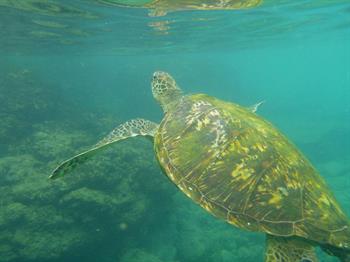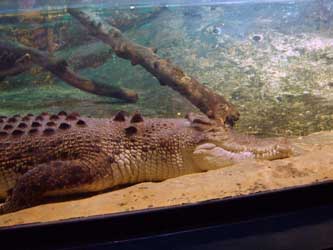Study marine ecology systems - marine weather, animal and plant life, and the human impacts marine systems.
Study marine life and ecology, whether for work or general interest.
PROFESSIONAL DEVELOPMENT
Marine Studies I is a Professional Development Course suitable for:
- Environmental Scientists.
- Divers.
- Marine Tourism Operators.
- Aquaculture Farmers.
- Fishermen.
- or a foundation course for anyone with a passion for the sea and marine biology.
COURSE STRUCTURE AND CONTENT
Course Duration: 100 hours of self-paced study.
Start Date: Start at any time - study at a pace that suits you, and with full tutor support for the duration of your studies.
Lessons: This course has 9 lessons:
1. Marine Ecology Systems
- Ecology
- Marine
Weather (including El Nino, Thermocline, Gulf streams, etc.)
- Continental
shelf
- Nutrient cycle
- Red tide
- Plankton
- Marine Plants (including
Mangroves, Shallow & Deep water algae, etc.)
2. Shallow Waters & Reefs
- Coral Reefs
- Rocky Shorelines
- Estuaries
- Introduction to marine arthropods.
3. Shellfish & Crustaceans
- Molluscs and Brachiopods
- True Crabs
- Hermit Crabs
- Lobsters
- Prawns, and more
4. Squid, Octopus, and Other Primitive Animals
- Cephalopods and Clupeids, etc.
5. Fish Part A
- (Cartilaginous Fish) Sharks
- Eels
- Rays
- Shark Life cycle
- How dangerous are sharks?
- Effect of sharks on tourism, etc.
6. Fish Part B
- (Bony Fish) Fish
Anatomy/structure (identifying external and internal parts)
- Legalities (protection of wildlife)
- Types of fish, etc.
7. Marine Mammals
- (Dolphins, Whales,
etc.)
- Types of marine mammals
- Protection and politics
- Position of these
animals in the food chain
- Products derived from marine mammals and substitutes for those products
8. Turtles, Sea Snakes and Seabirds
- Types of turtles and
sea snakes
- Toxicity of sea snakes
- Turtle protection
- Penguins and
other sea birds (e.g., stints, knots, pelicans, swans, gulls, eagles, ibis,
egrets, terns, shearwaters, gannets, albatross, prions, oyster-catchers
and petrels)
9. Human Impact on Marine Environments & Fishing
- Human impact on marine environments
- Commercial vs recreational fishing
- Significance of certain mesopelagic
fish
- Techniques for managing stocks of fish and other marine life
MARINE REPTILES
There are many reptiles that have adapted to a marine lifestyle. The earliest of these occurred during the Paleozoic era almost 300 million years ago.
Many of these species became extinct at the end of the Cretaceous period. Some extant species remain including sea snakes, sea turtles, crocodilians and sea iguanas.
Sea Turtles (Superfamily Cheloniodea)

Sea turtles have evolved to live in the oceans over 100 million years. They occupy all oceans aside from the polar regions. There are 8 species of marine turtles, these include:
-
Hawksbill Turtle Eretmochelys imbricata.
-
Green Turtle Chelonia mydas.
-
Black (or Eastern Pacific Green) Turtle Chelonia agassizii.
-
Loggerhead Turtle Caretta caretta.
-
Leatherback Turtle Dermochelys coriacea.
-
Olive Ridley Lepidochelys olivacea.
-
Kemps Ridley Lepidochelys kempii.
-
Flatback Turtle Natator depressus (endemic to northern Australia).
Sea turtles are known to migrate long distances between feeding and nesting sites. They have even been recorded to travel between oceans. They have paddle-like flippers, a modified ribcage (shell) and have lungs to breath like other reptiles.
Sea turtles live their life virtually submerged in water, only leaving the oceans to lay eggs. They have large lungs which enable them to exchange oxygen quickly and avoid trapping gases when diving deeply. They breathe air, but if needed can divert to anaerobic respiration for extended periods of time. Generally life histories are relatively similar between the different species.
Most sea turtles are long lived. They are known to have a lifespan of up to 80 years. It can take decades for them to reach sexual maturity. All sea turtles lay eggs. Breeding females will lay eggs on a beach in a hole dug with her hind flippers. The eggs are soft-shelled and can number up to 200 depending on the species. The sex of hatchlings is influenced by the temperature of the sand. Lighter sands are generally higher in temperature which results in a higher incidence of females hatching. Eggs generally hatch between 7-12 weeks. Sea turtles do not exhibit any signs of parental care for the young.
Sea turtles can be carnivorous, omnivorous or herbivorous. Green sea turtles are the only herbivorous adult turtle, feeding on sea grasses and algae. Most carnivorous species feed on crabs, shrimp, molluscs and jellyfish. As this food source is high in salt sea turtles possess a unique salt excretory gland. This gland can be positioned in different places depending on the species, such as the corner of the eye or the nostril.
All sea turtles are threatened. The main threats to sea turtles are pollution and habitat modification (especially sea grass beds, nesting beaches, mangroves and corals).
Sea Snakes (Order Squamata)
There are around 50 species of aquatic snake. As they are cold-blooded most are found in coastal tropical waters of the Pacific and Indian Oceans. They are generally 1 metre long, however some have been recorded at more than 3 metres.
All sea snakes have developed a paddle tail and eel-like body shape that is laterally compressed to adapt to an aquatic lifestyle. The ventral scales found on most other snakes is absent as are the muscular links. This would make them unable to move on land.
They are all adapted to feed, breed and breathe in an aquatic environment. Sea snakes breathe through valved nostrils that close when underwater. Some species can stay below water for up to 80 minutes before coming up for air and can dive to 100 metres or more. The lungs can extend the entire length of the body. This can assist with buoyancy, storing air when diving.
Sea snakes are carnivorous. Most feed on fish, but they can also feed on fish eggs and eels. Like the sea turtles, sea snakes have a salt excretory gland under their tongue. All of these snakes are extremely venomous, using their venom to paralyse prey. Their venom is the most potent of the animal kingdom, however there has never been a recorded human death from a sea snake bite. As they have no natural predators in the ocean, they can be quite curious of humans.
Most sea snakes are viviparious (embryos develop inside the body of the parent). Litter size can vary from 1 to 30, however, most produce less than 10 offspring at any one time. The young are born in the water where they live their entire life. The young can be quite large, some being half the size of the mother.
One genus of sea snake is oviparous, Laticauda (sea kraits). The five species of this genus lay eggs on land. This genus can regularly come on to shore, with one species, L. colubrina leaving the ocean to digest food.
Crocodilians (Order Crocodilia)

This order includes the Crocodiles, Alligators, Caimans, and Gharials (also known as Gavials). Crocodilians resemble enormous lizards, but they are very distinctive animals. It is the only group of modern reptiles having a four chambered heart like birds and mammals.
Crocodiles are the oldest of the reptiles and the most successful. They range in size from the Dwarf Caimans which grows to 1.4 m up to the Saltwater Crocodile (Crocodylus propsus) which can be longer than 7m and weigh over a tonne. All are well-adapted to amphibious life. They possess a secondary palate, valves in nostrils and throat and a powerful tail for aquatic locomotion.
The Saltwater Crocodile is the most commonly associated with marine environments. It is found in Australia, India, Southeast Asia, the Philippines and Papua New Guinea. It can occupy various aquatic habitats such as coastal waters, estuaries and freshwater marshes, swamps and rivers.
Marine Iguanas (Amblyrhynchus cristatus)
This species is found on the Galápagos Islands in the Pacific Ocean. These iguanas are unique amongst lizards as they have adapted to live and forage in the sea. They can dive to 10 metres They have a slightly laterally compressed tail which helps the iguana move through the water. Males generally grow to 1.3m in length and can weigh up to 1.5 kg. As with all reptiles they are ectothermic so they spend much of their time basking. Their dark coloured skin enables them to quickly absorb heat. Marine iguanas feed mainly on marine algae. Prior to feeding, marine iguanas must raise their body temperature to above 36 °C.
Why Study with ACS?
Design your own learning pathway.
Study at your own pace, from anywhere, at any time.
Receive prompt, expert support from our team of committed and friendly tutors.
Your learning is our priority. We are flexible and adaptable to meet your educational needs!
Enrolling is easy - just go to the top of this page and select your study method and payment option.
If you have any questions about studying with ACS, or want to know more about any of our courses, get in touch with our specialist tutors today. They will be happy to answer your questions and look at different study options to fit in with your goals.